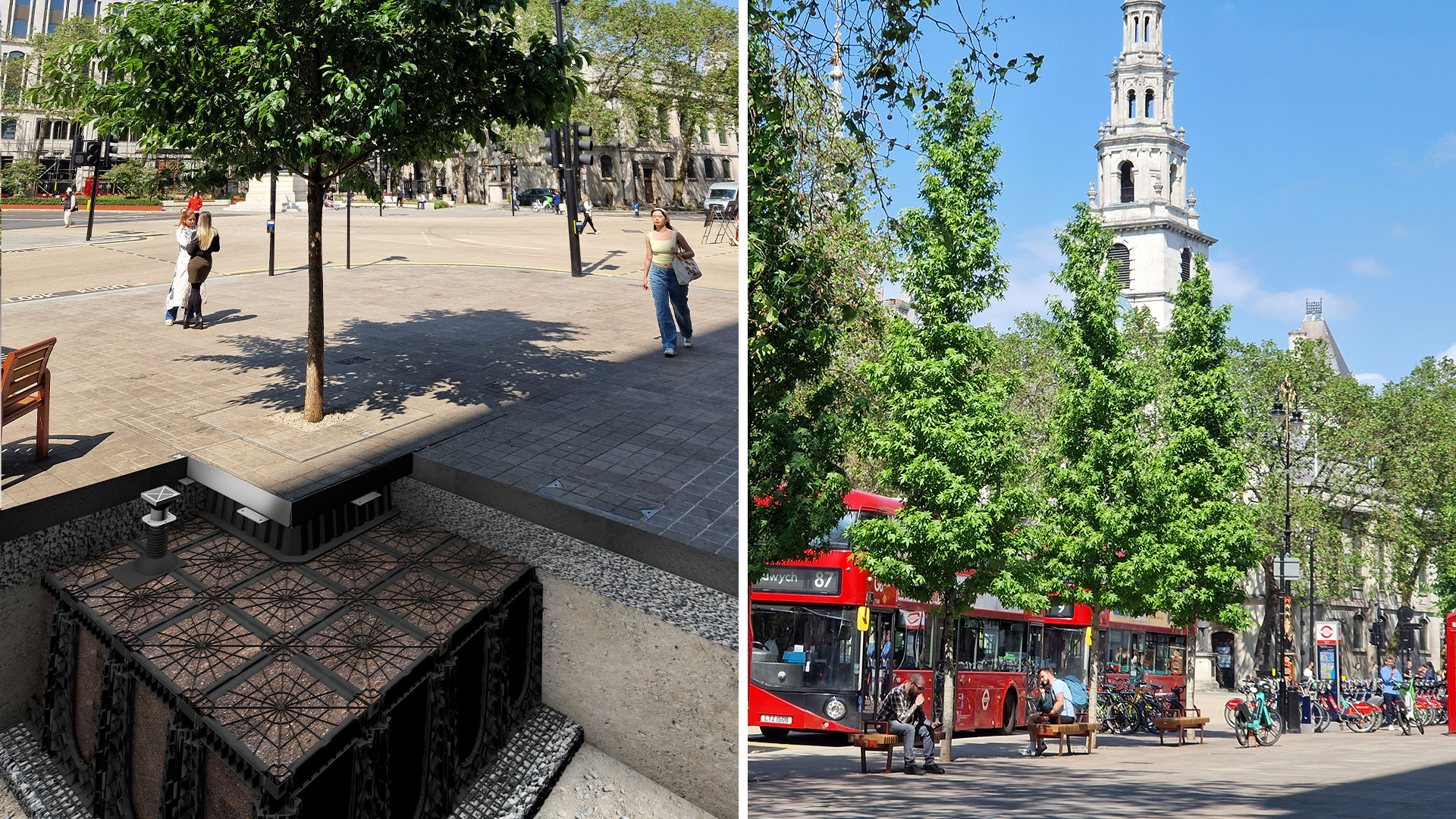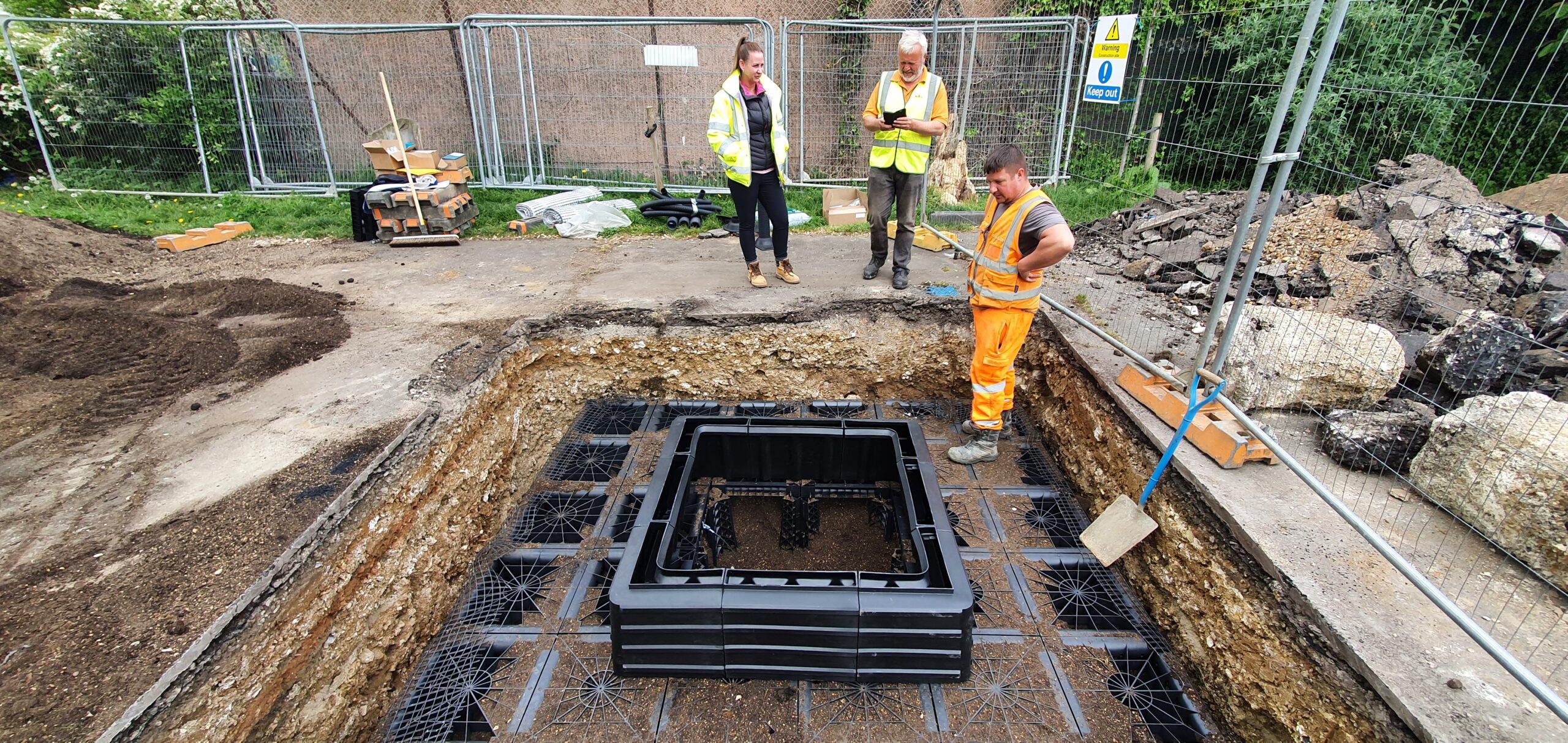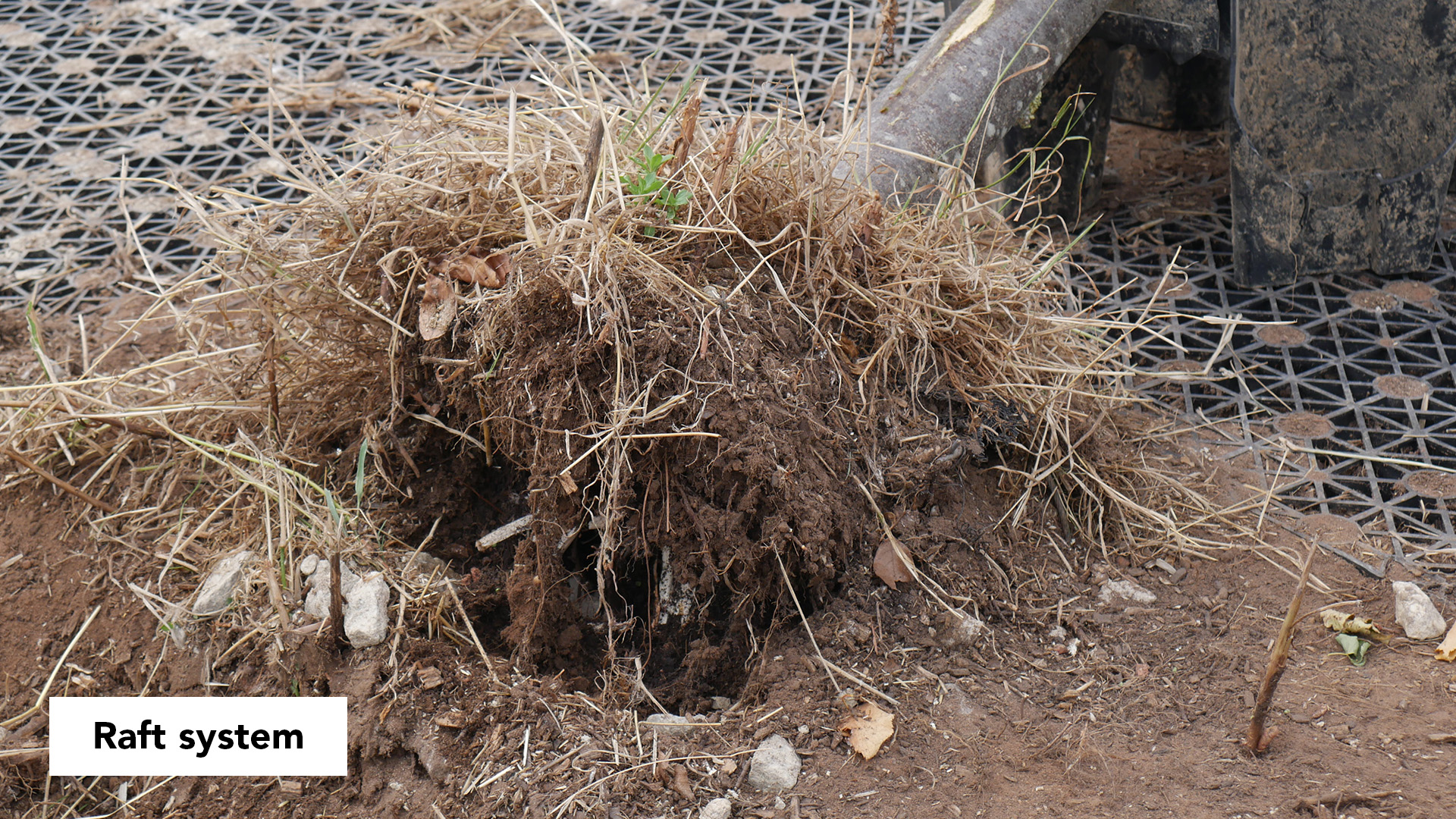Tree planting is a crucial aspect of urban development, offering numerous environmental, aesthetic, and health benefits. However, the success of tree-planting initiatives heavily depends on the choice of planting media. In this blog, we will delve into various tree planting systems, including soil cells, Stockholm tree pits, tree sand, and raft systems, comparing their features, advantages, and environmental considerations.
Soil Cells:
Soil cells are load-bearing soil support systems designed to prevent soil compaction while providing ample rooting space for trees. RootSpace, a market leader manufactured solely in the UK, offers 97% root-accessible volume, making it ideal for large-volume tree pits. Additionally, it can be used in paved and vehicular trafficked areas with minimal surface coverage. Soil cells, such as RootSpace, can also serve as stormwater treatment systems, storing rainwater, filtering pollutants and nourishing trees. The patented airflow lid ensures proper soil aeration, promoting tree health. RootSpace’s use of UK-sourced recycled materials and its BBA & EPD certification highlights its high strength and environmental sustainability. Furthermore, in 2021 GreenBlue introduced RootSpace Ocean, using post-fishing waste (nets, ropes and rigid plastic), undergoing a process of extrusion, washing, drying and separation before being cut into pellets ready for production.

Stockholm Tree Pits:
The Stockholm tree pit methodology, developed in Sweden, utilises aggregate stone as a structural component to support paved surfaces, with soil-filled gaps for root growth. However, the usable soil fraction is limited to approximately 20% of the total volume, necessitating larger tree pits compared to soil cell systems. Installation can be time-consuming, requiring on-site mixing and additional considerations such as biochar supplementation. Environmental concerns arise from the extraction of suitable stone and freight movement, impacting the product’s carbon footprint.
Compactable Tree Sand:
Originally popular but now declining in use, compactable tree sand consists of a sand-based mix with traces of composted green waste. Installed in layers and compacted, it must strike a delicate balance to avoid impeding root growth or causing pavement deformation. Challenges such as low nutrient levels and loss of tree health and vigour have contributed to its decreased popularity.
Raft Systems:
Raft systems involve a 150mm deep layer of sand serving as a base structure for pavement, distributing load while ensuring adequate planting media for tree roots. Care must be taken during installation to prevent compaction and maintain a conducive environment for root growth. Similar to compactable tree sand, raft systems face challenges related to nutrient levels and root health.
While soil cell systems offer significant advantages for urban tree planting, it’s essential to compare various options available in the market. Some soil cell systems utilise column-based structures, which differ from the lattice design of RootSpace. These column-based systems often use virgin-sourced materials and may claim comparable functionality to lattice structures. However, concerns arise regarding lateral loading and root-accessible volume. Unlike the interlocking lattice structure of RootSpace, column-based systems may not provide optimal rooting space, limiting the long-term health and stability of trees. Additionally, the sourcing of virgin materials and overseas manufacturing can impact environmental sustainability and product availability. When considering soil cell systems, it’s crucial to prioritise root-accessible volume, load-bearing capacity, and environmental credentials to ensure the successful establishment and growth of urban trees.

In a recent podcast episode, our colleague Howard engaged in an insightful conversation with Mark Syrett, formerly associated with Brighton City Council. Mark, spearheaded a tree planting trial at Stoneham Park in Hove, involving the installation of various tree-planting media. In discussing Growth, Maintenance and Installation he emphasised trees are growing quicker in RootSpace’s cells simply with more soil and water out-performing those in structural compacted environments. He noted that RootSpace significantly outperformed other options in terms of installation too, re-affirming our frequented phrase “Right Tree, Right Place, Right Way” for the successful establishment of trees.

In conclusion, selecting the appropriate tree-planting media is essential for ensuring the long-term health and vitality of urban trees. While each system offers unique features and benefits, soil cells like RootSpace stand out for their superior root-accessible volume, load-bearing capacity, stormwater management capabilities, and environmental sustainability. As urban landscapes continue to evolve, innovative solutions such as these will play a vital role in fostering green, resilient cities for generations to come.








